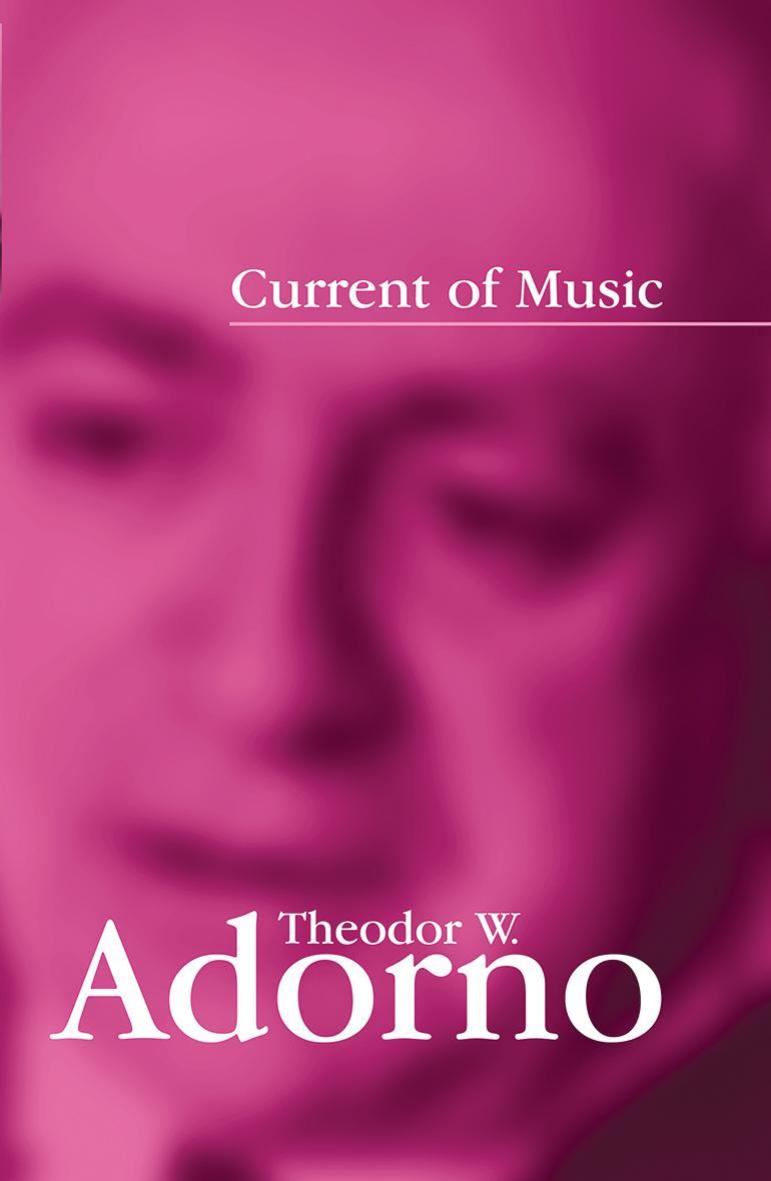Current of Music by Theodor W. Adorno

Author:Theodor W. Adorno
Language: eng
Format: epub, pdf
Publisher: Wiley
Published: 2014-08-10T14:00:00+00:00
d) Third Programme (undated)
In the last session we used a substantial part of a H[aydn] symphony to give you an idea of what we refer to as musical unity, i.e. that a symphonic movement is not a sequence of loosely connected, more or less pretty melodies, but rather a totality, and that the individual themes and motifs draw their sense purely from this totality. This occurs by means of the musical context. We define the musical context as all the relationships of equality, similarity and difference that exist between the individual parts of a piece of music in order to form an articulated whole from these parts. We can thus summarize the aim of this course as follows: its central concern is for you to learn how to grasp the musical context of a piece. In other words: for you no longer to listen to extended works of music as a potpourri, that is to say a random sequence of separate melodies, but rather to understand that not only the sequence, but even the melodies themselves are determined to their very roots by the whole on which they are based.
The way in which one organizes this musical context in music is known as musical form. The word ‘form’ refers primarily to the relationship between similar and different elements within a musical piece in time, for example when a 2nd thematic group follows the first, as we encountered in the H[aydn] symphony; the further division of this thematic group into subgroups, its further development in a middle section and finally its return. To reach a true understanding of musical form, however, it is not enough to account for these relationships in a schematic way; one must rather grasp the specific musical context of the work one is dealing with.
Now, that may seem self-evident. Going by the typical form of music appreciation, however, it is far less self-evident than you might think. I am sure you have all heard of musical forms. The two pieces we have discussed so far, for example – the Sch[ubert] movement and the H[aydn] movement – were written in sonata form. One also speaks of song form, rondo form, variation form, fugue form, etc. Now, these forms are generally presented to you as something ready-made. Their scheme, their recipe, is given: 1st subject, second subject, closing theme, development, recapitulation. I know from my own experience how little such schematic explanations help to reach a true understanding of music. One asks oneself why music should be structured according to that particular scheme rather than another, and one can easily see a form of standardization in such models that is an obstacle to any truly free productivity. Now this impression stems precisely from the fact that, when people normally talk about musical forms, they speak of the actual schemes only in an abstract fashion, rather than – as I described above – developing those formal models with reference to the specific musical contexts of specific musical works.
That is what we shall now attempt.
Download
This site does not store any files on its server. We only index and link to content provided by other sites. Please contact the content providers to delete copyright contents if any and email us, we'll remove relevant links or contents immediately.
| Biographies | Business |
| History & Criticism | Instruments |
| Musical Genres | Recording & Sound |
| Reference | Songbooks |
| Theory, Composition & Performance |
The Goal (Off-Campus #4) by Elle Kennedy(13602)
Kathy Andrews Collection by Kathy Andrews(11765)
Diary of a Player by Brad Paisley(7520)
What Does This Button Do? by Bruce Dickinson(6168)
Assassin’s Fate by Robin Hobb(6162)
Big Little Lies by Liane Moriarty(5745)
Altered Sensations by David Pantalony(5071)
Pale Blue Dot by Carl Sagan(4953)
Sticky Fingers by Joe Hagan(4143)
The Death of the Heart by Elizabeth Bowen(3578)
The Heroin Diaries by Nikki Sixx(3516)
Beneath These Shadows by Meghan March(3281)
Confessions of a Video Vixen by Karrine Steffans(3273)
How Music Works by David Byrne(3234)
The Help by Kathryn Stockett(3115)
Jam by Jam (epub)(3048)
Harry Potter 4 - Harry Potter and The Goblet of Fire by J.K.Rowling(3031)
Computational Linguistics and Intelligent Text Processing: 20th International Conference, CICLing 2019 La Rochelle, France, April 7â13, 2019 Revised Selected Papers, Part I by Alexander Gelbukh(2965)
Strange Fascination: David Bowie: The Definitive Story by David Buckley(2833)
